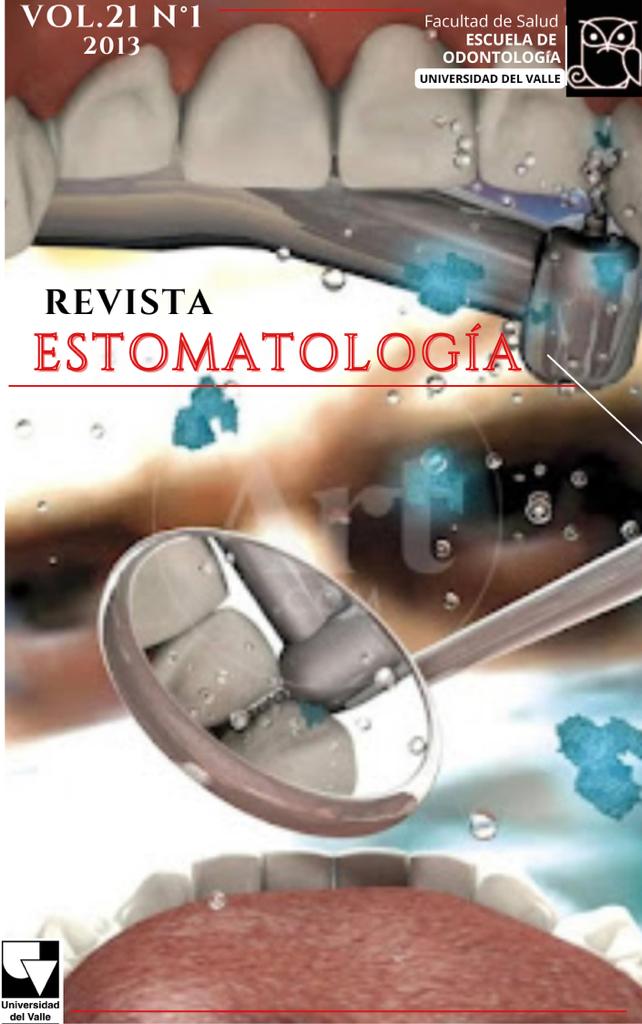Macroscopic analysis of dental and periodontal tissues of pig (Sus domesticus) exposed to high temperatures
Main Article Content
SUMMARY
Objective: To describe the physical changesof
macro-structural dental tissues (enamel,
dentin and cement) and periodontal
(oral mucous membrane, alveolar compact
bone and cancellous alveolar bone) of
domestic pig (Sus domesticus) expose to
high temperatures.
Materials and methods: This descriptive
study observed the physical changes in macro-
structural dental tissues and periodontal
in 25 teeth of domestic pigs subjected to
high temperatures (200°C, 400°C, 600°C,
800°C and 1000°C).
Results: Dental and periodontal tissues studied
show great resistance when subjected
to high temperatures without changing significantly
their macro-structure. At 200°C
no color changes and cracks appear in the
enamel. At 400°C there was an increase of
the fissure and no separation between the
hard tissues, initiating carbonization. At
600°C fractures in the dental tissues and
bone are most apparent. At 800°C burning
of the tissues initiated. At 1000°C there was
no evidence of soft tissue.
Conclusions: Macroscopic analysis of the
teeth articulated in their alveolar-dental
units constitutes a experimental model that
ssimulates the changes of dental and periodontal
tissues expose to high temperature.
It is recommended to conduct astudy on
human teeth in their respective unit articulated
alveolar to determine whether the
macro-structural physical changes described
are repeated and can be extrapolated,
and which can eventually be used duringthe process of dental identification and
documentation of the medical legal autopsy
used in the case of bodies or human remains
burned, charred and burned.
Key words: Forensic dentistry, domestic
pig (Sus domesticus), dental and periodontal
tissues, temperature exposition, animal
model.
- Ángela Ocampo, Juan David Sánchez, Carlos Humberto Martínez Cajas, Freddy Moreno, Correlation of ten non-metric dental traits between deciduous and permanent molars of three ethnic colombian groups. , Revista Estomatología: Vol. 17 No. 2 (2009)
- David Acosta, Andrea Melissa Porras, Freddy Moreno, Relation between the facial contour form, the dental arches and the upper central incisors shape in dental students from Universidad del Valle - Cali , Revista Estomatología: Vol. 19 No. 1 (2011)
- Pedro Asprilla, Kevin Franco, Jessica Morales, Freddy Moreno, Morphological characterization of permanent dentition of a group of Afrodescendants at Istmina (Chocó, Colombia) , Revista Estomatología: Vol. 25 No. 2 (2017)
- Liliana Marín, Freddy Moreno, Odontología forense: identificación odontológica. Reporte de casos , Revista Estomatología: Vol. 11 No. 2 (2003)
- Adolfo Contreras, Adriana Jaramillo, Freddy Moreno, Carlos Valencia, First meeting of the research groups of School of Dentistry at the Universidad del Valle “Constructing research strategies.” Opinion article , Revista Estomatología: Vol. 19 No. 2 (2011)
- Freddy Moreno, Sandra Moreno, Molar cusp pattern of human low molars. Literature review , Revista Estomatología: Vol. 24 No. 2 (2016)
- Johanna Aramburo, Angela Zapata, Sugey Zúñiga, Freddy Moreno, Stereomicroscopic analysis of dental materials employed in endodontic exposed to high temperatures , Revista Estomatología: Vol. 19 No. 2 (2011)
- Pedro Castro, Claudia Corral, Felipe García, Pilar León, Carlos Humberto Martínez Cajas, Freddy Moreno, Efficacy of four toothbrushes on removal of plaque with modified Bass technique in Dental Hygiene Students at Cali , Revista Estomatología: Vol. 16 No. 2 (2008)
- Sandra Moreno, Freddy Moreno, Dental Anthropology: clinical importance , Revista Estomatología: Vol. 15 No. 3 (2007)
- Diana Chalapud, Maria Fernanda Mosquera, María Fernanda Pulgarín, Carlos Cruz, Freddy Moreno, Cheiloscopic analysis in dental students of the city of Cali , Revista Estomatología: Vol. 19 No. 1 (2011)
Los autores/as conservan los derechos de autor y ceden a la revista el derecho de la primera publicación, con el trabajo registrado con la licencia de atribución de Creative Commons, que permite a terceros utilizar lo publicado siempre que mencionen la autoría del trabajo y a la primera publicación en esta revista.





